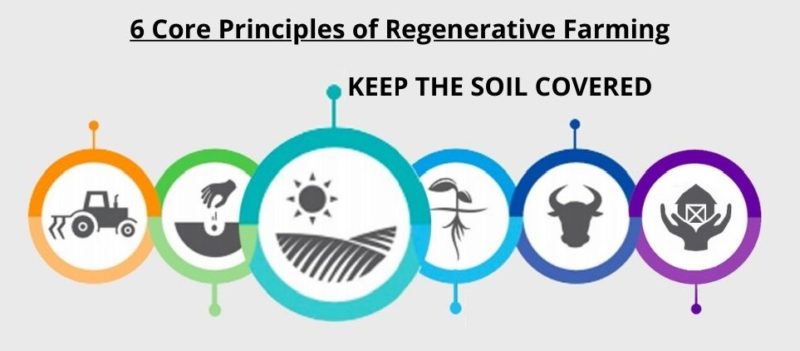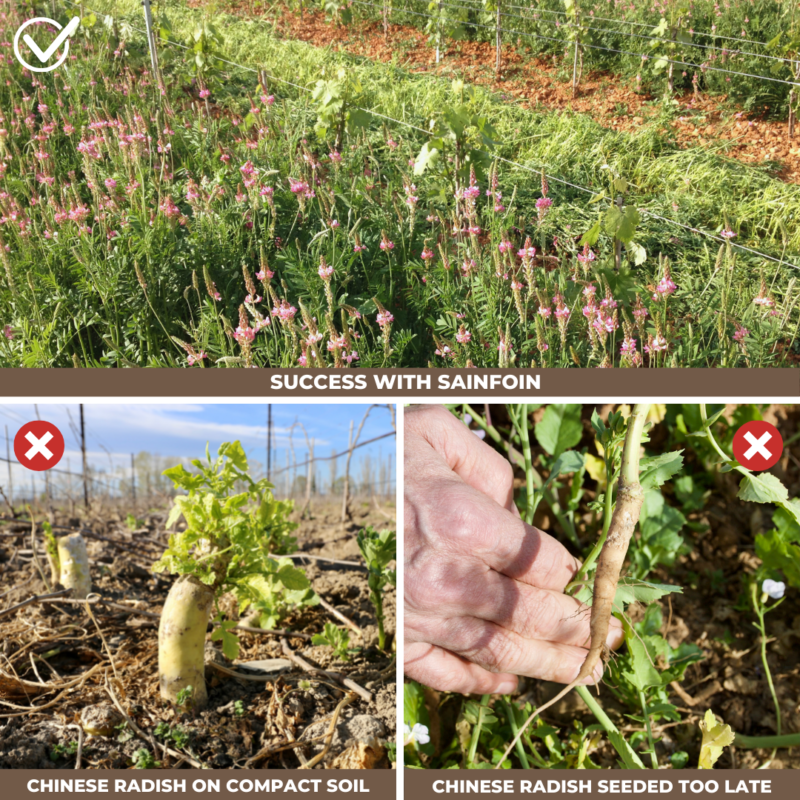The philosophy behind regenerative farming focuses on conservation and improvement of our farming environments. It emphasizes restoring local biodiversity but above all improving the quantity and quality of topsoil. One of the most effective practices is the use of cover crops. Used correctly they mitigate soil erosion while improving soil fertility, quality, water retention, weeds, pests, diseases, biodiversity.

In the case of vineyards, it is a matter of seeding in between the rows a plant species that benefits both the vines and their soil, while contributing to the balance of their surrounding ecosystem. This is a highly effective way of avoiding the use of chemical fertilizers while strengthening the vines’ ability to resist parasitic pressures. So far so good…
Frist we need to choose a species of cover that suits the soil’s needs (such as: fertility; water retention; structure; microbial diversity…) while taking into account the requirements of the vine during its growth cycle and the specificities of our Mediterranean climate. It’s getting a bit complicated now…
Grasses provide carbon to the soil (think humus) but their need for water can be taxing on the vines. We are experimenting with Canary grass, which requires less water.
Legumes provide the soil with nitrogen, often the most limiting nutrient for plants, and also essential for the soil’s microbial life.
The crucifers (think radish or carrot) have pivot roots which improve the soil’s structure and act as reserves of water that is released as they decompose.
Finally, it is also possible to mix cover crops. However, try finding the ideal mix of seeds in terms of their germinating calendar is a feat. Add to the mix the fact that seeds come in all sizes, some small and some large. It becomes next to impossible to homogenously seed your plot with just one pass of your seed spreader… Are you still with me?
Once you’ve decided on your strategy, and you have your seeds and materials, it’s time to decide when to sow the seeds and establish your cover crops. For our climate, the best period is September. That’s great timing – we’re in the middle of our harvest! Now, if it doesn’t rain soon after planting, we’ve done all that work to feed the birds.
In 2020, we sowed Chinese radish in two different types of soil at two different periods of time. In the dry loam soil, late sowing gave limited radish development, while in the deep, clayey soil, early sowing gave very large radishes — but our radishes that grew partly above ground! We had overestimated the capacity of this plant to loosen the soil’s structure.

As you can see our decisions need to take into account the whole ecosystem. We still have a lot to learn. We won’t succeed with every cover crop we try, but the benefits easily outweigh our troubles. For us, trials are for learning, not for success!
To enter our website, you must be of legal drinking age in your country.